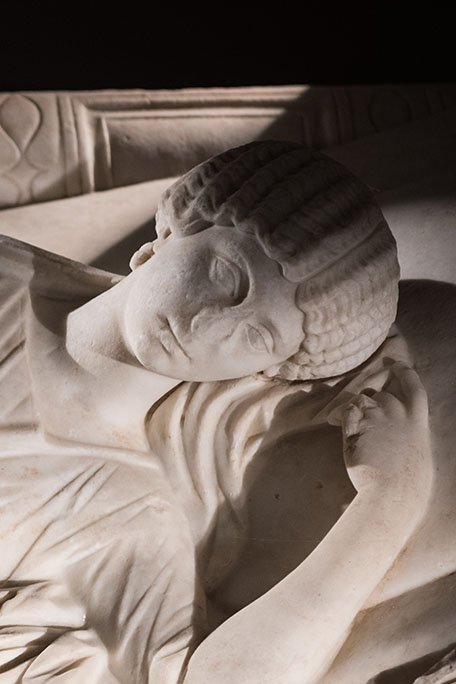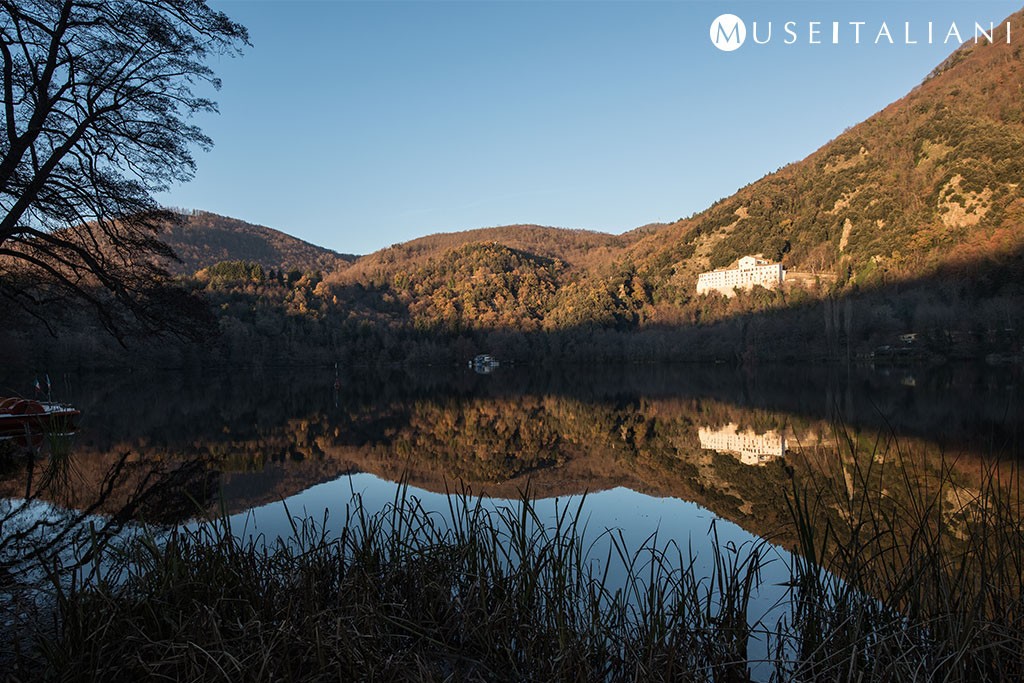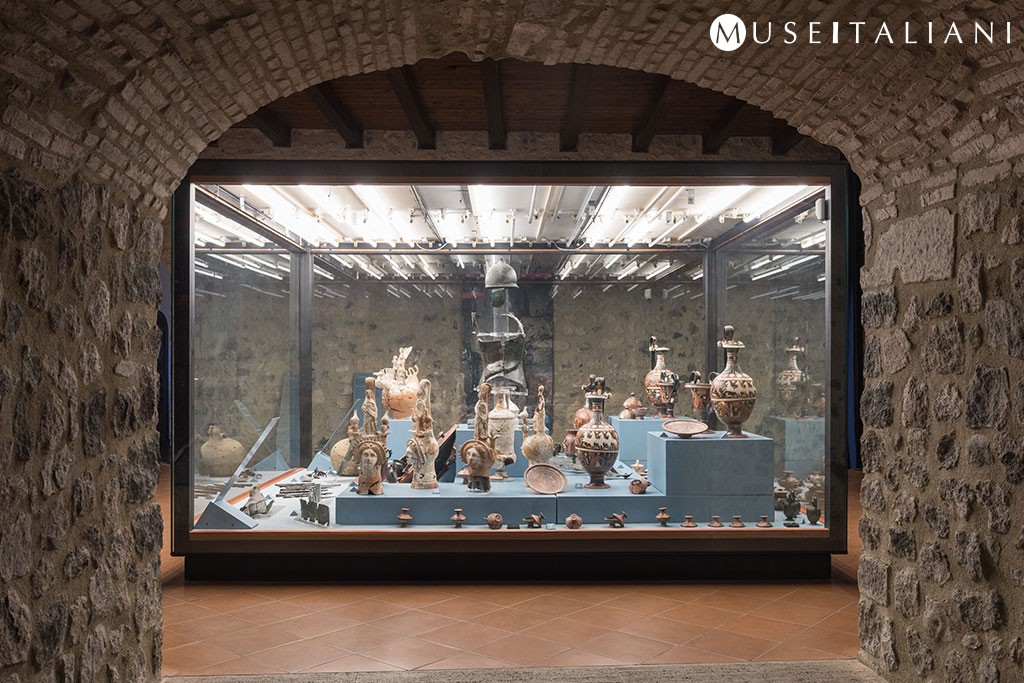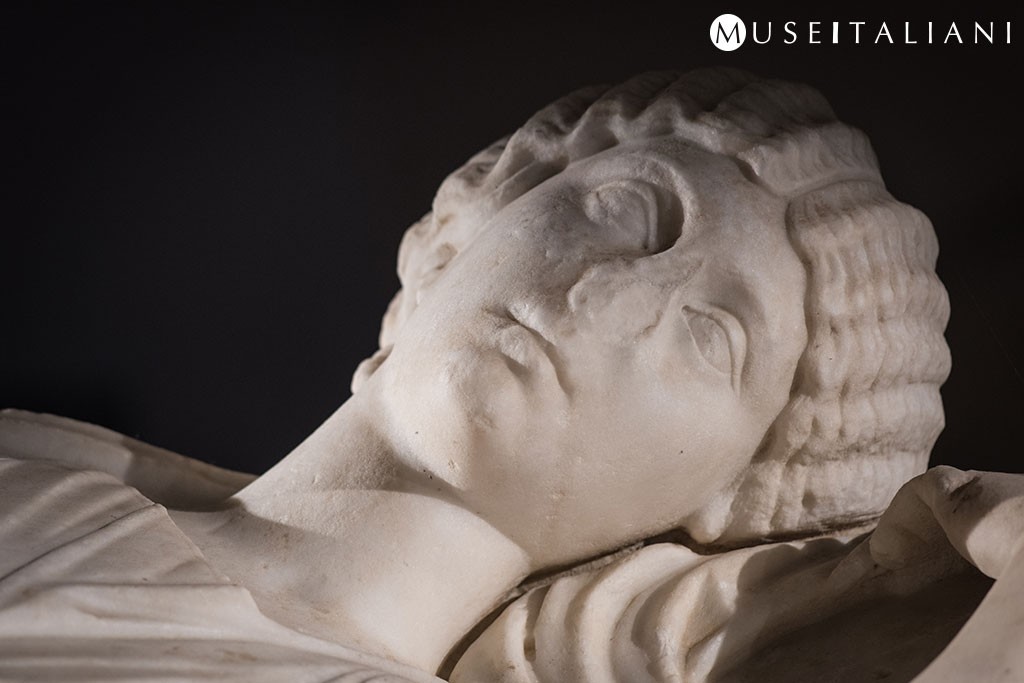Museo archeologico nazionale del melfese "Massimo Pallottino"
Melfi
The museum
In Northeast Basilicata, in an imposing castle, we discover the museum that tells the story of a territory and the sleeping girl on the Sarcophagus of Rapolla.


In the soft green landscape on the northeast edge of Basilicata, not far from the border with Apulia, among volcanic hills, stands the town of Melfi. While the date of its foundation is unknown, ancient pre-roman populations, Daunians and Lucanians, have left traces of their passage in the Vulture-Melfese, particularly those of a funerary nature.

With the Normans and subsequently the Swabians, the town took on a central role in the region. A lover of hunting, which was very popular in these areas, Federico II chose Melfi Castle as his home, after extending and renovating it. It was here, in 1231, that he promoted the “Constitutiones Augustales”, also known as the “Melfi Constitutions”: the first revolutionary text of civil and criminal laws drawn up in the Middle Ages.

The Castle of Melfi
The Castle, the charm of which has remained virtually the same over the centuries, partly thanks to its majestic position overlooking the valley, is built on a platform of lava and made of the same stone. It is now home to the Museo archeologico nazionale del melfese, the collections of which illustrate the life, beliefs and customs of the people who lived in these fertile lands from proto-history until Roman times.
The museum is named after the archaeologist Massimo Pallottino (1909-1995), who was one of the leading specialists on pre-roman Italy and also considered to be the founder of modern Etruscology.

Among the most significant works, the Sarcophagus of Rapolla stands out, named after the place where it was found, in 1856, along the ancient Via Appia, just a few kilometres from Melfi. Created by craftsmen from Asia Minor, it is made of white marble and is impressive in size (1.80 m tall, 2.50 m long and 1.20 m wide).

The lid portrays a beautiful young girl lying on her bed as though she is sleeping. A little dog lies at her feet, but all that remains of it today are its paws. There is a cherub by her head, holding a garland of flowers in one hand, and a torch pointing downwards in the other, adopting a pose which, in Roman funerary iconography, alludes to death. Her hairstyle, typical of women who lived at the time of the emperors of the Antonina dynasty, has enabled us to date the monument to Roman times and, more precisely, to the latter part of the second half of the second century AD.
Towards the top of the sarcophagus there is a freeze featuring Tritons and sea monsters, which frames the part below where, in the rich architectural division of small temples supported by grooved columns, we can see other divinities and classical heroes.
Who is the young woman portrayed?
The sarcophagus has no inscription and perhaps the name of the young girl will remain a secret forever. The name of the person who dedicated such an impressive work of art to her memory is also unknown, but it was most certainly commissioned by an aristocrat capable of paying the considerable expenses for construction and transportation.
Some people attribute the sarcophagus to Emilia (100 BC circa – 82 AD), daughter of the Patrician Marco Emilio Scauro, one of the most influential politicians of the Republic, but this does not seem to be credible, especially in consideration of the chronology attributed to the monument.

Hairstyles, history and chronologies
As well as making assessments of a stylistic nature, it is common to date works also on the basis of particular elements such as the hairstyle of the people portrayed.
As still happens today, women were inspired more or less directly by the fashions of the day, influenced by the aesthetic choices of the empresses, whose hairstyles can be reconstructed thanks to their numerous official portraits, mainly in the form of sculptures and on coins.
For the whole ancient classical period, particular care and attention were paid to hairstyles and beards, creating fashions which could be inspired by the appearance of eminent personalities. Dissemination, particularly from the fourth century BC, of physiognomic portraits (like the famous and faithful depictions of Alexander the Great, for example) helped establish a spirit of emulation in Roman times. This has enabled art historians and archaeologists to reconstruct a reliable chronological grid of the evolution of fashions and hairstyles, which is very useful for the historical contextualisation of images and portraits, also of anonymous subjects.
The museum, hosted in Melfi’s federician castle, exhibits the outcome of the archaeological searchresult in the Vulture’s area, from protohistorical period till the roman conquest.
Address
Via Normanni - Castello Federiciano
85025 Melfi
Timetables
Monday 2.00 - 8.00 pm; Tuesday-Sunday 9.00 am - 8.00 pm
Situazione Emergenziale Aperture :
Aperture Attive
Information
drm-bas.museomelfi@beniculturali.it
Ph: +39 0972 238726
Closure: Monday morning
Full: 2,50 €
Reduced: 1,25 €